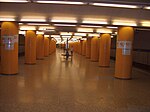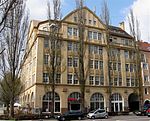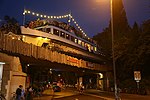St. Andreas, Munich
Roman Catholic churches completed in 1953Roman Catholic churches in Munich

St. Andreas is a church and former parish in Munich, Bavaria, Germany. It was built from 1952 to 1953 as one of the first modern church buildings in Munich after World War II, designed by Ernst Maria Lang.
Excerpt from the Wikipedia article St. Andreas, Munich (License: CC BY-SA 3.0, Authors, Images).St. Andreas, Munich
Zenettistraße, Munich Am Schlachthof (Ludwigsvorstadt-Isarvorstadt)
Geographical coordinates (GPS) Address Website External links Nearby Places Show on map
Geographical coordinates (GPS)
| Latitude | Longitude |
|---|---|
| N 48.126175 ° | E 11.553856 ° |
Address
St. Andreas
Zenettistraße 44
80337 Munich, Am Schlachthof (Ludwigsvorstadt-Isarvorstadt)
Bavaria, Germany
Open on Google Maps











